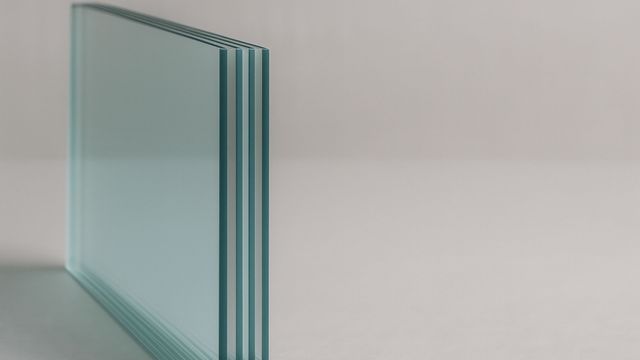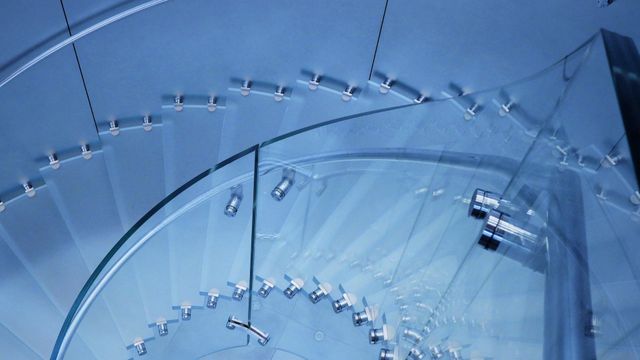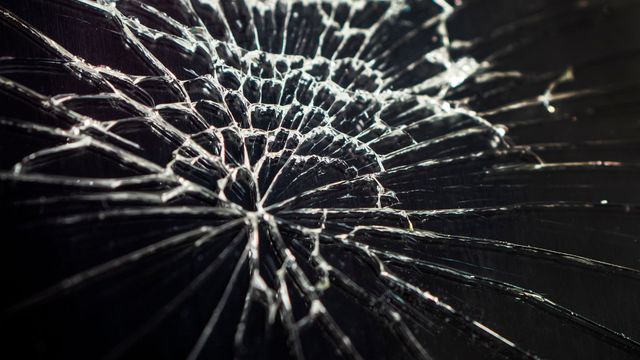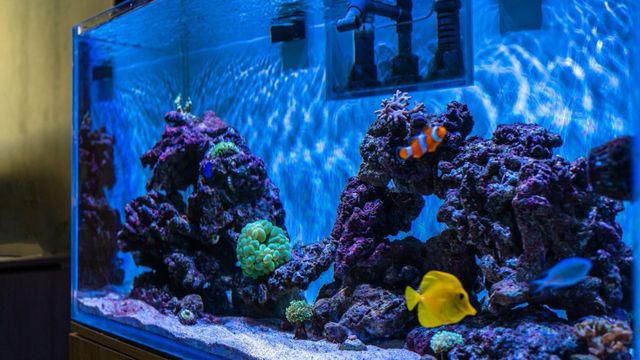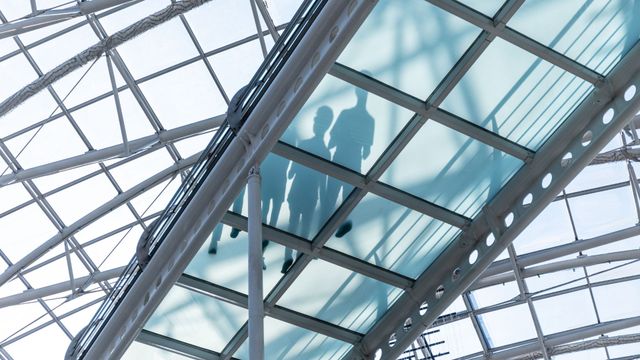Glass fire ratings explained
Share this blog:
Fire-rated glass can save lives. Discover how it works, how it's rated and our revolutionary fire glass product.
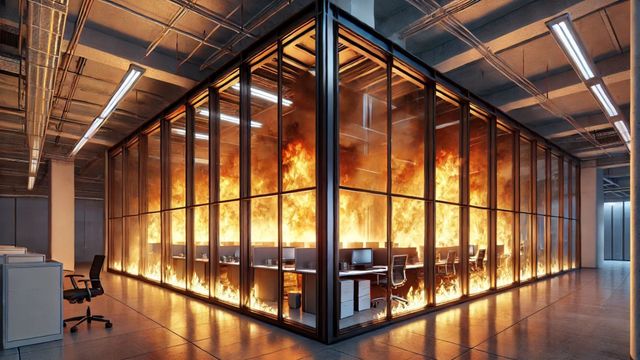
Fire-rated glass is designed to prevent the spread of fire and smoke. Often found in designated escape routes, staircases and common areas, it gives firefighters more time to battle the blaze and save lives.
Se le considera ignífugo porque se clasifica según su resistencia al fuego. Esta clasificación se mide en minutos y, según el producto, puede abarcar dos aspectos: el tiempo que el vidrio permanece en su marco y el tiempo que actúa como barrera contra el calor.
Si está supervisando la construcción de un edificio nuevo o la remodelación de uno antiguo, el vidrio resistente al fuego es esencial para garantizar la seguridad de sus habitantes u ocupantes.
En este artículo, analizamos en profundidad el vidrio resistente al fuego: cómo funciona, cómo se clasifica y cómo podemos ayudar.
¿Cómo funciona el vidrio resistente al fuego?
En el mundo de la fabricación de vidrio, las capas importan. Tomemos como ejemplo el vidrio laminado, que une una capa intermedia de plástico entre dos láminas de vidrio. Esta innovación estructural lo hace excepcionalmente resistente a las roturas.
O bien, considere el doble y triple acristalamiento. Estos brindan estabilidad y seguridad mediante la superposición de capas estructurales.
El vidrio ignífugo funciona de forma similar. Está compuesto por capas de vidrio templado con intercalaciones. En caso de incendio, el humo y las llamas se compartimentan entre los paneles de vidrio, lo que evita que se rompan.
La capa intermedia, ya sea de plástico o gel, es intumescente, lo que significa que se hincha al exponerse al calor. Esto proporciona aislamiento contra la propagación de las llamas.
En otras palabras, el vidrio resistente al fuego está diseñado para mantener la estabilidad estructural y proporcionar aislamiento. Ambos factores ralentizan la propagación del fuego, lo que permite a las personas evacuar y a los bomberos combatir el incendio con mayor rapidez.
Sin embargo, para que funcione correctamente, el vidrio resistente al fuego debe instalarse correctamente en un sistema de marco resistente al fuego. Todo, desde el marco hasta las bisagras, desde los componentes hasta las manijas, funciona en conjunto para proporcionar el nivel requerido de seguridad contra incendios.
¿Cómo se clasifica el vidrio resistente al fuego?
El vidrio resistente al fuego se clasifica de dos maneras: por su integridad estructural y por su aislamiento. Ambas se miden con un número que indica su resistencia al fuego.
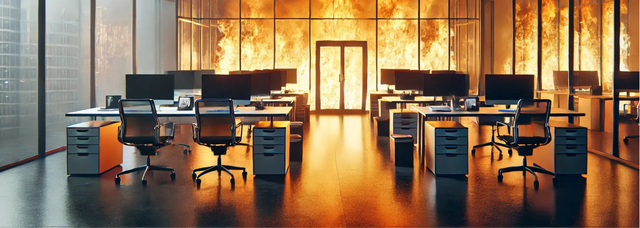
"E" se refiere a la integridad estructural. Esto se refiere al tiempo que el vidrio puede permanecer en su marco al ser expuesto al fuego.
Un producto de vidrio clasificado E30, por ejemplo, puede retardar con éxito las llamas y el humo durante 30 minutos.
La segunda clasificación es "I" para aislamiento. Esto se refiere al nivel de protección térmica que ofrece el vidrio. El vidrio I30 ofrece 30 minutos de aislamiento.
En algunos casos, el vidrio resistente al fuego se clasifica con una clasificación W. Esto demuestra que ofrece resistencia al calor, pero no especifica por cuánto tiempo.
¿Dónde se utiliza el vidrio resistente al fuego?
La ley exige la instalación de vidrio resistente al fuego en edificios con mucho tránsito peatonal. Esto ayuda a frenar la propagación del fuego, proteger vidas y garantizar salidas seguras para los ocupantes. Suele instalarse en vías de escape y escaleras.
En viviendas de obra nueva y reformas, se deben instalar puertas cortafuegos para separar el hueco de la escalera de las habitaciones contiguas. También son obligatorias en viviendas de dos plantas entre el garaje y la vivienda principal.
¿Por qué es importante el vidrio resistente al fuego?
El vidrio normal es vulnerable al fuego. Al exponerse al calor directo, el vidrio recocido puede fracturarse en cuestión de minutos. En caso de incendio, esto permite que las llamas se propaguen sin control al interior del edificio. El vidrio ignífugo se ha desarrollado para proteger a las personas, impidiendo que esto ocurra.
Al retardar la propagación del fuego, el vidrio resistente al fuego brinda a las personas más tiempo para salir del edificio y a los bomberos más tiempo para llegar.
No es exagerado decir que el vidrio ignífugo salva vidas. Pero ¿se le puede llamar con razón "ignífugo"?
¿Existe algo llamado "vidrio ignífugo"?
"Ignífugo". "Irrompible". "A prueba de bombas". Estas son palabras que se usan para describir materiales de construcción, incluidos los productos de vidrio.
Lo cierto es que ningún material es ignífugo. Sin embargo, algunos materiales son más resistentes al fuego que otros. El vidrio ignífugo es el más resistente del mercado.
¿En qué se diferencia el vidrio resistente al fuego de otros tipos de vidrio?
A pesar de todas sus ventajas, el vidrio flotado estándar no es muy resistente al fuego, rompiéndose alrededor de 120 °C (250 °C). El vidrio templado es mejor, soportando temperaturas de hasta aproximadamente 260 °C (500 °F).
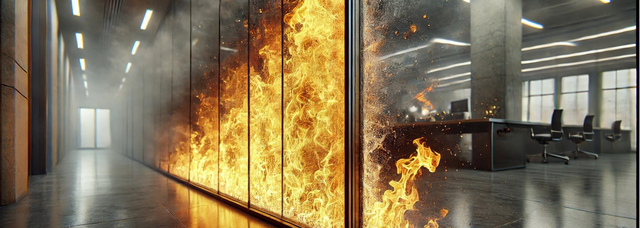
Sin embargo, ninguno de estos tipos de vidrio se compara con el vidrio ignífugo. Este puede soportar temperaturas de 870 °C (1,600 °F) o superiores.
What is toughened glass?
Algunos tipos de vidrio ignífugo están hechos de vidrio templado. Este es un tipo especial de vidrio de seguridad, templado para mayor resistencia.
Se le denomina "vidrio de seguridad" por su forma de romperse. Mientras que el vidrio flotado estándar se rompe en fragmentos grandes y afilados, el vidrio templado se fragmenta en muchos pedazos diminutos. Esto reduce la probabilidad de causar lesiones a los transeúntes y es mucho más fácil de limpiar.
El vidrio laminado es otro tipo de vidrio de seguridad, que puede ser templado o no. Consiste en una lámina de plástico intercalada entre dos paneles de vidrio. Esta se rompe en su marco, manteniendo así la estabilidad estructural. Se utiliza para parabrisas, acristalamientos en zonas de huracanes y otros entornos que requieren altos niveles de protección.
El vidrio ignífugo se asemeja al vidrio laminado, ya que consta de dos láminas de vidrio y una capa intermedia. Sin embargo, el tipo de capa intermedia es diferente. En ToughGlaze, utilizamos una capa intermedia de gel y templamos el vidrio en nuestros hornos para mejorar su integridad estructural.
Acerca de nuestro vidrio resistente al fuego
At ToughGlaze, we manufacture a revolutionary fire-rated glass product –
TG FR. It's exceptionally strong, provides hours of fire protection and is beautifully clear. So clear, in fact, that it's barely distinguishable from other types of laminated glass.
Creemos que TG FR es, sin duda, uno de los vidrios resistentes al fuego más eficaces y versátiles del mercado británico. Pero no se fíe solo de nuestra palabra. TG FR cumple con la normativa de construcción británica y cuenta con la certificación Kitemark.
TG FR tiene una clasificación de hasta EI120, lo que proporciona al menos dos horas de integridad y protección contra el calor radiante cuando se instala en un marco adecuado. Y, como todos nuestros productos, se puede personalizar para satisfacer las necesidades específicas de su proyecto.
So, if you're looking for high-quality
toughened fire-rated glass, don't hesitate to
get in touch for a quick, competitive quote.








